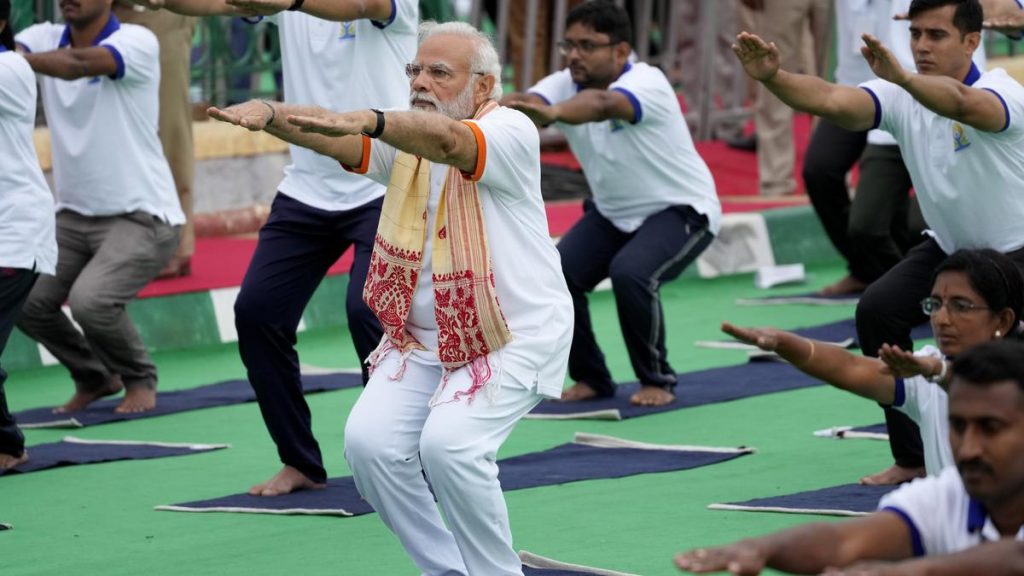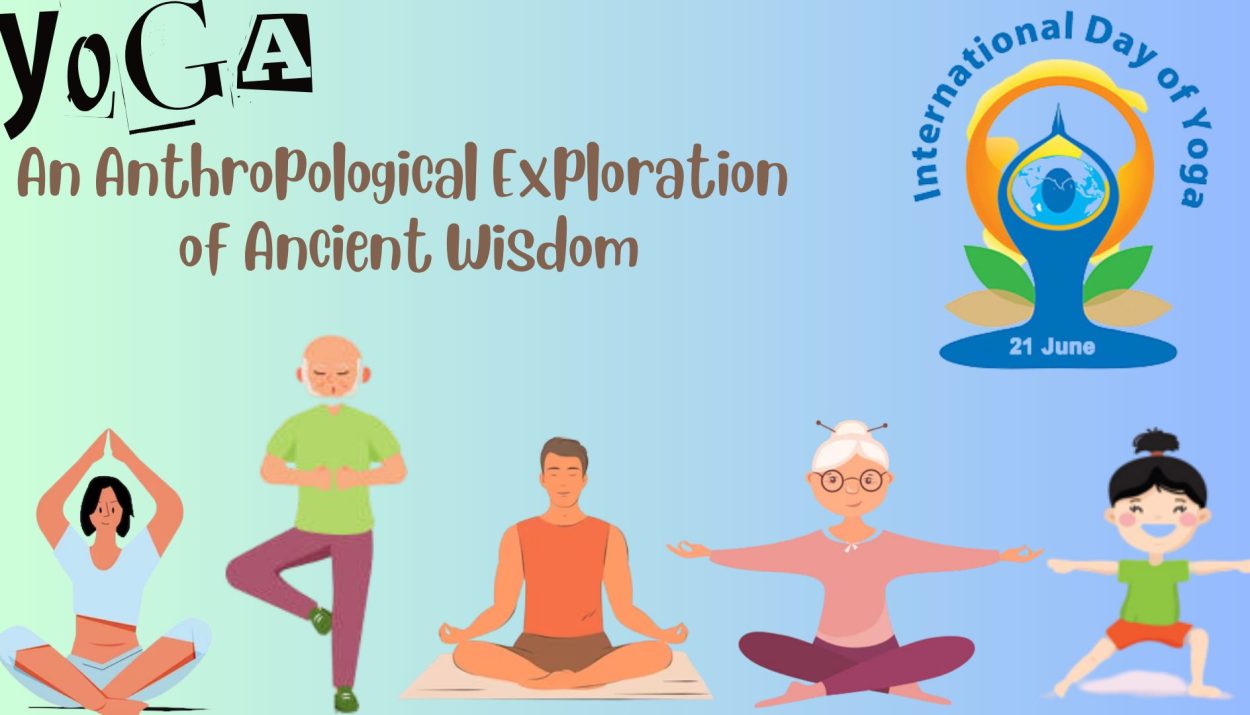Yoga, an ancient practice originating in the Indian subcontinent, has gained significant popularity worldwide in recent decades. Beyond its physical exercise aspect, yoga embodies a rich cultural and spiritual heritage that has evolved and adapted over thousands of years. Yoga brings harmony between mind and body. From an anthropological perspective, studying yoga provides valuable insights into the intersection of culture, spirituality, and human experience. “Yoga: An Anthropological Exploration of Ancient Wisdom” delves into the profound cultural significance and timeless teachings of yoga, uncovering its transformative power through an interdisciplinary lens.
“The methods and technologies of how to experience that which is beyond the physical is known as the science of Yoga.”
– Sadhguru
“Yoga is a study of life, the study of your body, breath, mind, intellect, memory, and ego. Study of your inner faculties!”
– Gurudev Sri Sri Ravi Shankar
International Day of Yoga
International Day of Yoga, celebrated annually on June 21st, is a global event that highlights the transformative power of yoga. It was officially recognized by the United Nations General Assembly in 2014. The selection of 21 June as the designated day is based on its alignment with the summer solstice, which marks the longest day of the year in the Northern Hemisphere. This particular date holds profound importance within the Yogic system.

This day serves as a platform to promote the practice of yoga and its myriad benefits on physical, mental, and spiritual well-being. International Day of Yoga brings together people from all walks of life, cultures, and backgrounds, emphasizing unity, wellness, and global harmony.
Historical Roots: Tracing the Origins of Yoga
To understand yoga’s anthropological significance, it is crucial to explore its historical roots. Yoga is both an art and a science that promotes a healthy way of life. Its name originates from the Sanskrit root ‘Yuj,’ which conveys the idea of joining or uniting. The mentioned union signifies the harmonious connection between mind and body, as well as integration with the natural world. Additionally, it represents the merging of individual consciousness with the universal consciousness.
Lord Shiva, the first yogi or Adiyogi, recognized as the original yogi, is believed to have imparted his wisdom to seven knowledgeable individuals referred to as the Saptarishis. These enlightened beings then disseminated this knowledge in seven distinct directions, spanning various regions. India is the place where the yogic system achieved its most comprehensive and profound manifestation. The knowledge they shared emphasized the potential for human beings to transcend their physical limitations and evolve.
The origin and history of yoga date back thousands of years and are deeply rooted in ancient India. While the exact beginnings of yoga remain somewhat mysterious, archaeological evidence suggests that it has been practised for at least 5,000 years.
The earliest traces of yoga can be found in the Indus Valley civilization, an ancient civilization that thrived in the Indus River Valley around 3000 BCE. Excavations have revealed seals and artefacts depicting figures in yogic postures, indicating the presence of yoga in the culture of that time.
Yoga is also mentioned in the ancient texts of India, particularly the Vedas, which are considered the oldest scriptures of Hinduism. The Rigveda, composed around 1500 BCE, contains hymns and verses referring to the practice of yoga. The Upanishads, philosophical texts that emerged around 800 BCE, explore the concepts of self-realization, meditation, and spiritual enlightenment, all of which are integral to yoga.

Over the centuries, yoga continued to evolve and diversify. It found its place in various religious and philosophical traditions, including Buddhism and Jainism. Yogic practices were explored in different ways, ranging from physical postures (asanas) and breath control (pranayama) to meditation and ethical principles.
The sage Patanjali, who lived around 200 BCE, is widely regarded as the compiler of the Yoga Sutras, a comprehensive text that systematized the philosophy and practices of yoga. Throughout history, many yogis, sages, and practitioners contributed to the development and transmission of yogic knowledge. Prominent figures such as Swami Vivekananda, Sri Paramahansa Yogananda, and Sri Tirumalai Krishnamacharya played significant roles in popularizing yoga in the modern era.
Cultural Significance: Yoga as a Living Tradition
Yoga’s cultural significance extends beyond its origins, encompassing its role as a living tradition in various societies. As a cultural phenomenon, yoga serves as a bridge that connects people across borders and cultures. It transcends religious, linguistic, and social boundaries, embracing individuals from all walks of life. This universal appeal fosters a sense of unity and understanding, promoting cross-cultural dialogue and respect.
Moreover, yoga has influenced various art forms and creative expressions, leaving an imprint on music, dance, literature, and visual arts. Its graceful postures, fluid movements, and meditative qualities have inspired artists worldwide, resulting in captivating performances and artworks that reflect the essence of yoga’s philosophy.

Beyond its individual benefits, yoga has societal implications as well. Its teachings promote compassion, non-violence, and mindfulness, fostering a culture of well-being and harmony within communities. Yoga’s emphasis on self-care and self-awareness encourages individuals to become more attuned to their physical and mental health, which in turn positively impacts collective well-being.
In recognition of its cultural significance, yoga has been inscribed on the Representative List of the Intangible Cultural Heritage of Humanity by UNESCO. This acknowledgement highlights its enduring value as a living tradition, honouring its role in shaping human history, spirituality, and intercultural exchange.
Yoga in the Global Context
Yoga, originating from ancient India, has transcended borders and found its place in the global context. In recent decades, its popularity has soared, attracting millions of practitioners worldwide. So, what makes yoga such a global phenomenon?
Yoga encompasses physical postures, breath control, meditation, and ethical principles, offering a comprehensive system for overall well-being. In a fast-paced world filled with stress and distractions, yoga provides a refuge—a means to cultivate inner peace, balance, and self-awareness.
Regardless of cultural, religious, or ethnic background, anyone can practice yoga. The health benefits associated with yoga have also contributed to its international popularity. Scientific studies have highlighted its positive effects on physical fitness, stress reduction, mental well-being and even chronic conditions.

Online platforms offer access to instructional videos, virtual classes, and a global community of practitioners. This accessibility has made yoga available to individuals who may not have had access to local yoga studios or instructors. Yoga has also blended with other fitness disciplines, such as Pilates and dance, creating unique hybrid practices.
Conclusion
As a living tradition, yoga continues to evolve and adapt to modern times. It embraces innovation while preserving its foundational principles, adapting to diverse contexts and needs. Yoga studios, festivals, and retreats have become hubs for cultural exchange, where individuals from various backgrounds come together to explore and celebrate this ancient practice. In today’s globalized world, yoga has transcended cultural boundaries and has become a multi-billion-dollar industry.







